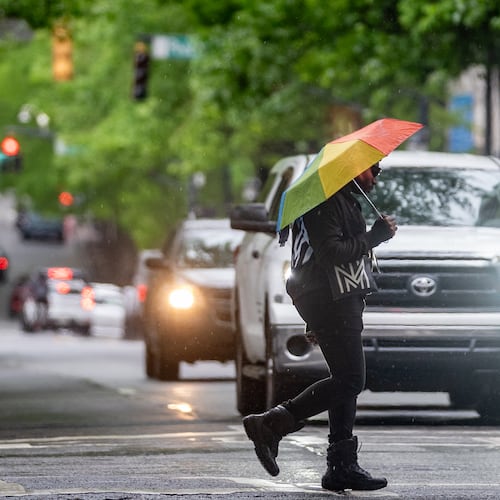Texas and the Gulf Coast are no strangers to killer hurricanes. But flooding sometimes causes more damage than the strong winds, as with the remnants of Hurricane Harvey that are inundating Houston and coastal communities.
Here is a list of the worst hurricanes to strike the U.S., as compiled by the Weather Channel, including a couple from before the storms got names. Following is a list of the some of the worst floods in U.S. history, some of which were also caused by hurricanes.
» Dogs get temporary home before Hurricane Harvey strikes
Galveston Hurricane, September 1900
The deadliest hurricane in U.S. history hit Galveston as a Category 4 storm and seas 20 feet above normal. An estimated 8,000 to 12,000 people died, mostly in the Galveston area, and damage was estimated at $30 million.
South Florida Hurricane, September 1928
This large Category 5 storm made landfall near West Palm Beach after already overrunning Puerto Rico. The storm surge caused Lake Okeechobee to overflow, putting the surrounding area under more than 10 feet under water. At least 2,500 drowned, and more than 1,700 homes were destroyed.
Hurricane Katrina, August 2005
Katrina, a broad Category 3 storm, killed nearly 2,000 people and caused $100 billion in damage, according to the Federal Emergency Management Agency. The surge of ocean water proved as dangerous as the wind. Katrina came ashore near Buras, La., with a storm surge into Mississippi estimated at 28 feet around Waveland and Pass Christian. Water also pushed into Louisiana's Lake Ponchartrain, where the surging water breached levees to flood 80% of New Orleans.
Miami Hurricane, September 1926
The storm hit Miami when residents of South Florida were less familiar with hurricanes. The Red Cross estimated 372 people died in the storm, which caused $105 million damage. As the storm passed over Lake Okeechobee, wind blew water to break the Moore Haven dike in several places, where about 150 people drowned.
Hurricane Andrew, August 1992
Andrew was a small, but fierce storm, which struck South Florida as a Category 5 storm and then Louisiana as a Category 3 hurricane. Intense winds damaged or destroyed 127,000 homes; damage totaled $26 billion.
Hurricane Camille, August 1969
Camille struck the Mississippi coast with winds that knocked out the measuring equipment and a record storm surge of 24 feet that was later surpassed by Katrina. More than 140 people died along the Gulf Coast, and 113 died in Virginia from flash flooding in the storm's remnants.
» Homeowner shoots hurricane prowler in head
Labor Day Hurricane, September 1935
The small storm struck the Florida Keys with 185-mph winds and a 20-foot storm surge. The combination killed 408 people, primarily World War I veterans who were working in construction in the area, according to the National Oceanic and Atmospheric Administration.
Credit: Mark Lennihan
Credit: Mark Lennihan
Superstorm Sandy, October 2012
The massive hurricane and broad wind, with a storm surge across New Jersey and New York, killed 72 people and damaged or destroyed 650,000 homes. The storm caused an estimated $65 billion in damage, flooding streets and subway lines, cutting power around New York City.
Long Island Hurricane, September 1938
The storm's strong winds and surging water enveloped Fire Island on its way to inundating New England. The storm killed 256 people; damage was estimated at $306 million. Gusts up to 180 mph were measured south of Boston. There was massive destruction across Massachusetts, Rhode Island and Connecticut.
Hurricane Charley, August 2004
The storm was the strongest to strike Florida since Andrew, sweeping through Punta Gorda and Port Charlotte before crossing the state and striking Myrtle Beach, S.C. Ten deaths and $15 billion in damage were blamed on the storm.
Other flooding:
Johnstown, Pa. May 1889
The South Fork Dam on the Little Conemaugh River collapsed, killing 2,200 people and causing $17 million damage, in the wake of 20 million tons of water, according to the Johnstown Area Heritage Association.
Mississippi River, April and May 1927
Heavy rains flooded the river from Illinois to Louisiana. At least 246 people died, according to the Red Cross. The flood caused an estimated $100 million in damage as 26,000 square miles went under water across seven states, according to a Congressional Research Service report. The flood sparked the federal construction of the levees and floodways that reduced but didn't eliminate the threat of flooding.
St. Francis Dam, Calif. March 1928
The 185-foot concrete dam, which fed the Los Angeles aqueduct, collapsed and killed 450 people with 12 billion gallons of water, according to the California Office of Historic Preservation.
Rapid City, S.D. June 1977
Heavy rains over the Black Hills caused flash flooding that killed 238 people and caused $164 million in damage by destroying homes, businesses and bridges in the city, according to the National Weather Service.
Mississippi River, May to October 1993
Months of heavy rain in the Upper Midwest left the river at flood stage in St. Louis for 81 days. Fifty deaths and $15 billion in damage were blamed on flooding, according to the National Weather Service.
Big Thompson Canyon, Colo. July 1976
Twelve inches of rain in a few hours in this narrow mountain canyon created a flash flood of water 19 feet high that killed about 145 people and caused $40 million in damage, according to the National Oceanic and Atmospheric Administration.
The Latest
Featured



